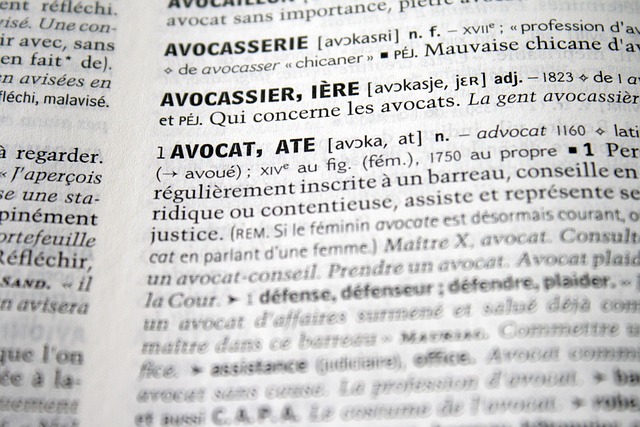Mail wire frauds, a sophisticated form of financial deception, target individuals and businesses by impersonating trusted entities through phishing emails and fraudulent documents. Fraudsters direct victims to wire funds without authorization, using technology to mimic legitimate websites and networks to evade detection. Avoiding copyright infringement is crucial for businesses in the digital age, as easy access to content increases the risk of violating intellectual property rights with severe legal consequences. To protect against frauds and infringement, businesses should adopt responsible content usage practices, educate employees, implement multi-factor authentication, regular software updates, secure communication channels, and encryption of sensitive data. Studying real-world case studies enhances defenses against white-collar crimes and advances security measures like continuous employee training and AI technologies.
Mail wire frauds, a sophisticated and evolving digital scam, pose significant risks to businesses worldwide. Understanding these common tactics and schemes is crucial for navigation in today’s digital landscape. This article delves into various aspects of mail wire frauds, focusing on copyright infringement as a major concern. We’ll guide you through identifying red flags, implementing preventative measures, and sharing real-world case studies to empower your business against such fraudulent activities, ensuring you avoid copyright infringement pitfalls.
- Understanding Mail Wire Frauds: Common Tactics and Schemes
- Copyright Infringement: A Major Concern for Businesses
- Identifying Red Flags: Spotting Potential Scams
- Preventative Measures: Securing Your Business Against Fraud
- Case Studies: Real-World Examples and Lessons Learned
Understanding Mail Wire Frauds: Common Tactics and Schemes

Mail wire frauds are a sophisticated form of financial deception where criminals exploit legitimate business practices to steal money and sensitive information. Understanding these schemes is crucial for businesses aiming to avoid copyright infringement and other legal pitfalls. Common tactics often involve impersonating trusted entities, such as banks or government agencies, through phishing emails or fraudulent documents. These communications direct victims to wire funds to specific accounts without proper authorization.
By employing intricate deceptions, fraudsters target both individuals and businesses alike. They may use sophisticated technology to mimic legitimate websites, making it difficult for recipients to discern real from fake. Moreover, these crimes often involve complex networks of co-conspirators, making them challenging to trace and prosecute as white-collar and economic crimes. In some cases, fraudsters leverage their schemes to influence philanthropic and political communities, further complicating investigations. While many victims are individuals, businesses must remain vigilant to protect their operations, intellectual property, and data integrity, especially in today’s digital age where such scams can quickly evolve and spread through various online channels.
Copyright Infringement: A Major Concern for Businesses

Copyright infringement is a significant concern for businesses operating in today’s digital landscape. With the ease of access to online content, it has become increasingly easier for companies to inadvertently or intentionally violate intellectual property rights. This can have severe consequences, including legal repercussions and financial losses, as businesses may face white collar and economic crimes charges or be subjected to lengthy jury trials.
To avoid these pitfalls, businesses must ensure they are practicing responsible content usage, providing proper attribution when sharing or reproducing copyrighted materials, and implementing robust internal policies that educate employees on copyright laws. Investing in comprehensive general criminal defense strategies can also offer protection against potential infringement claims, helping businesses mitigate risks and safeguard their operations.
Identifying Red Flags: Spotting Potential Scams

When it comes to mail wire frauds, identifying red flags is paramount in avoiding copyright infringement in business transactions. Scammers often use urgent language, demanding immediate payment or threatening consequences to trick victims into acting swiftly and without due diligence. Be wary of unexpected emails or calls requesting sensitive information or payment details, especially if they claim to be from a reputable organization.
Additionally, look out for inconsistencies in sender details, grammatical errors, or poor formatting that might suggest a phish attempt. The absence of official branding or signatures can also raise suspicions. Always verify the legitimacy of such communications through independent channels and consult with professionals to ensure you’re not falling victim to a scam. Achieving extraordinary results in business involves staying alert and proactive in navigating these potential threats, ensuring compliance throughout all stages of the investigative and enforcement process.
Preventative Measures: Securing Your Business Against Fraud

To secure your business against mail wire fraud, it’s crucial to implement robust preventative measures. Start by educating your employees about the risks and signs of fraudulent activities. Regular training sessions can help them identify potential scams, such as phishing attempts or fake invoices, that often form the backbone of mail wire fraud. Implement multi-factor authentication for all financial transactions to add an extra layer of security.
Additionally, keep software and systems up-to-date with the latest security patches. Using secure communication channels and encrypting sensitive data can also deter potential fraudsters. Moreover, establish clear protocols for verifying transactions and sourcing before processing payments. Regularly reviewing and updating these measures ensures that your business remains protected against evolving fraudulent strategies, including avoiding copyright infringement in business operations. For corporate and individual clients alike, these steps can lead to winning challenging defense verdicts and, ultimately, the complete dismissal of all charges.
Case Studies: Real-World Examples and Lessons Learned

In the world of mail wire frauds, understanding real-world examples offers invaluable insights for businesses aiming to avoid copyright infringement and other illicit activities. Case studies reveal that many high-stakes cases involve sophisticated schemes where perpetrators exploit weak links in financial systems to divert funds. For instance, a recent case involved a phishing operation targeting philanthropic and political communities, demonstrating the evolving nature of these crimes. By studying such scenarios, businesses can learn crucial lessons about recognizing red flags, implementing robust security measures, and fostering a culture of vigilance against white-collar and economic crimes.
These incidents underscore the importance of staying informed about emerging tactics used by fraudsters. Organizations must prioritize continuous training for their employees to identify potential threats, such as suspicious emails or unusual financial transactions. Moreover, leveraging advanced technologies like artificial intelligence can aid in detecting anomalies and preventing copyright infringement, ensuring business operations remain secure and reliable.
Mail wire frauds pose significant risks to businesses, but understanding common tactics and implementing robust security measures can help prevent these scams. By identifying red flags such as unusual requests or copyright infringement issues, companies can protect their intellectual property and financial assets. Case studies highlight the importance of staying vigilant and adopting preventative measures like multi-factor authentication and employee training. To avoid copyright infringement in business, it’s crucial to foster a culture of ethical practices and stay informed about evolving fraud schemes.






